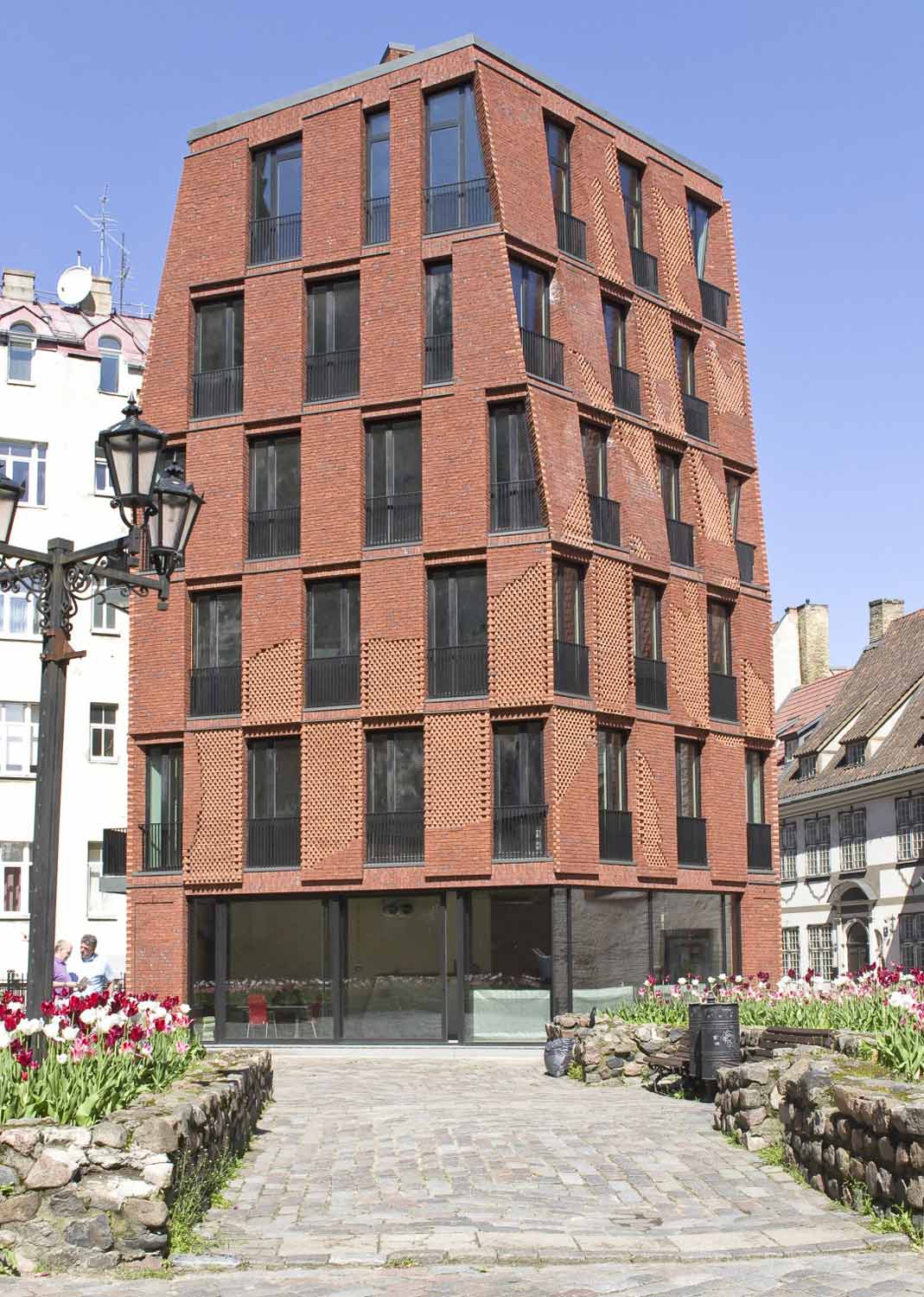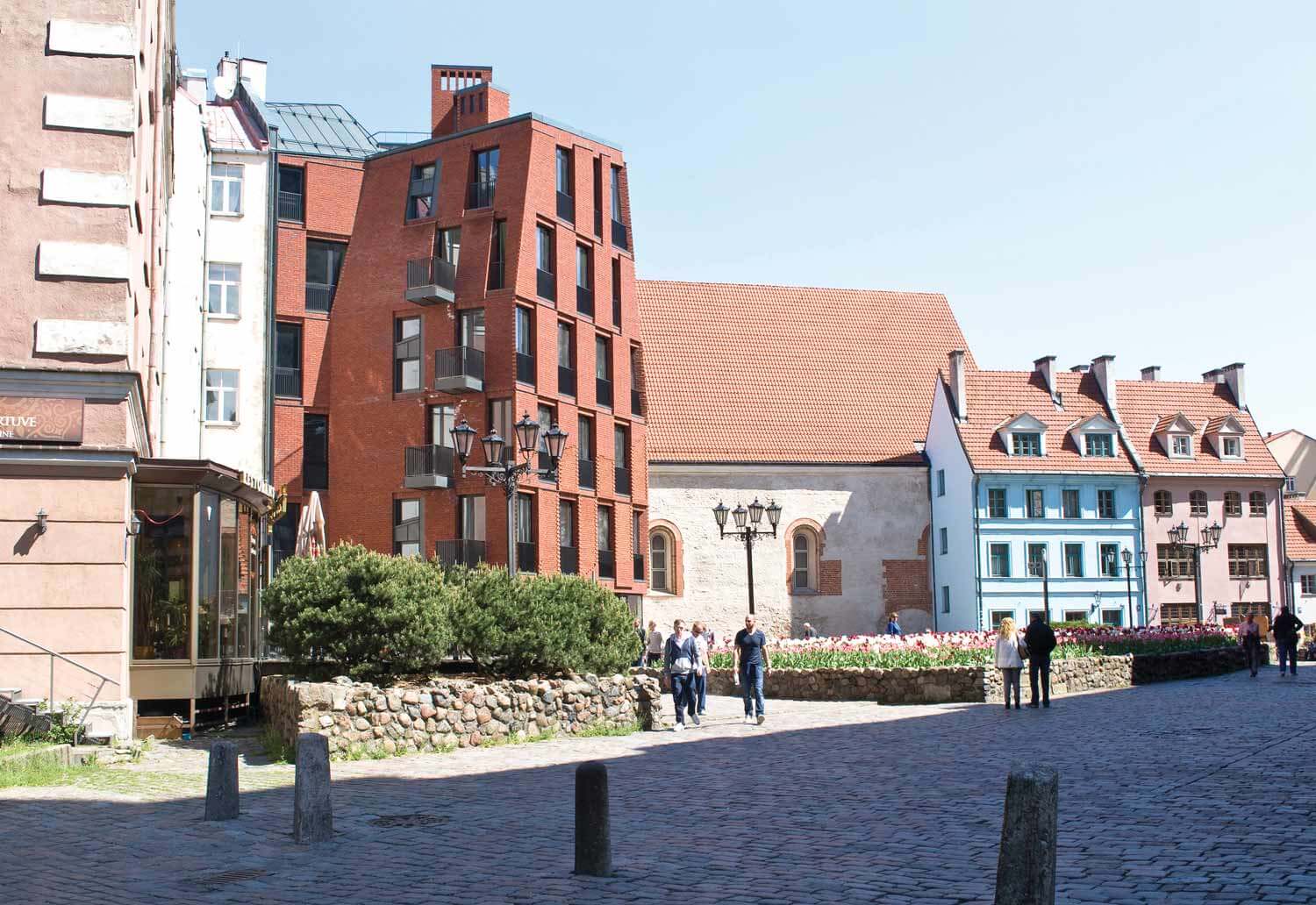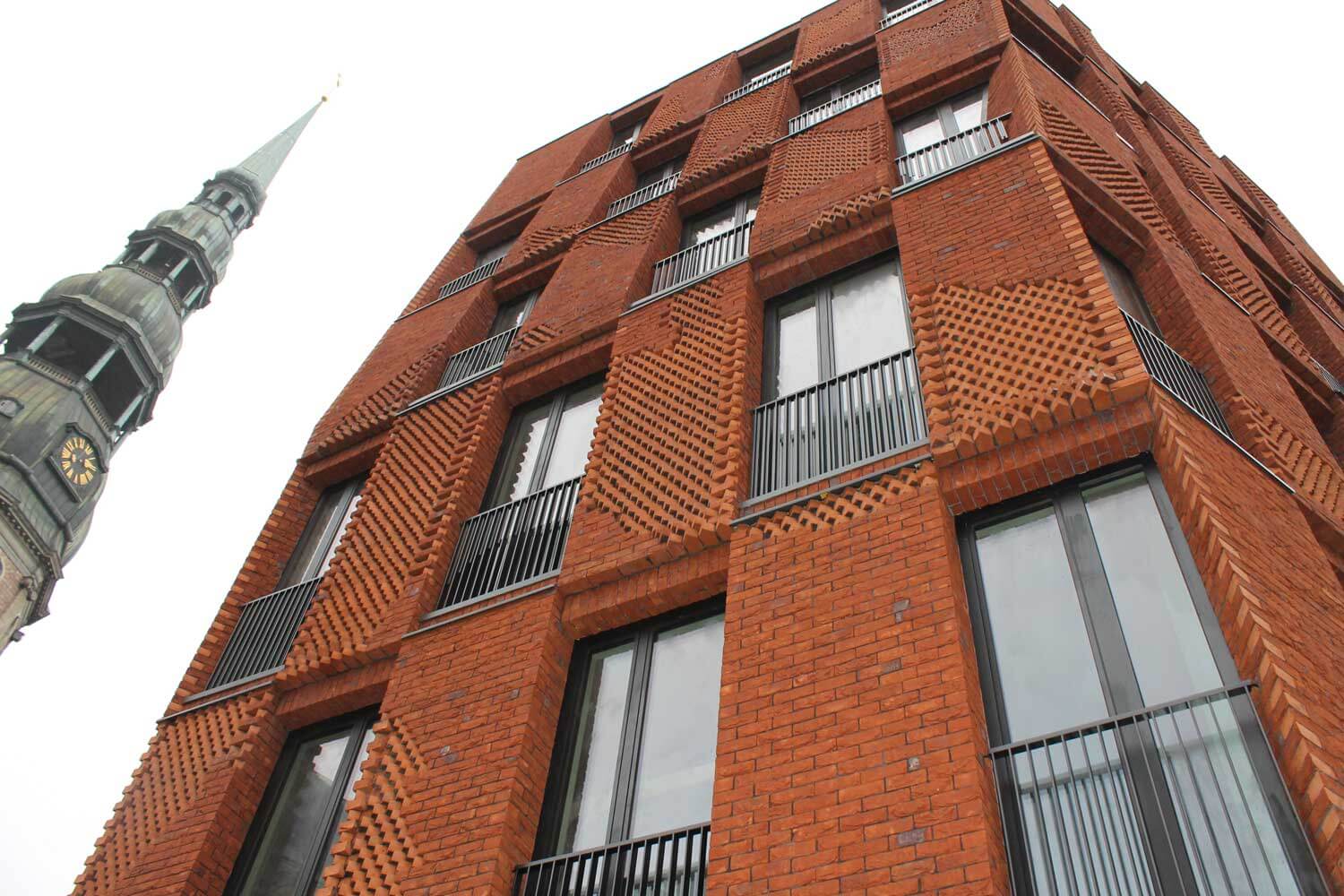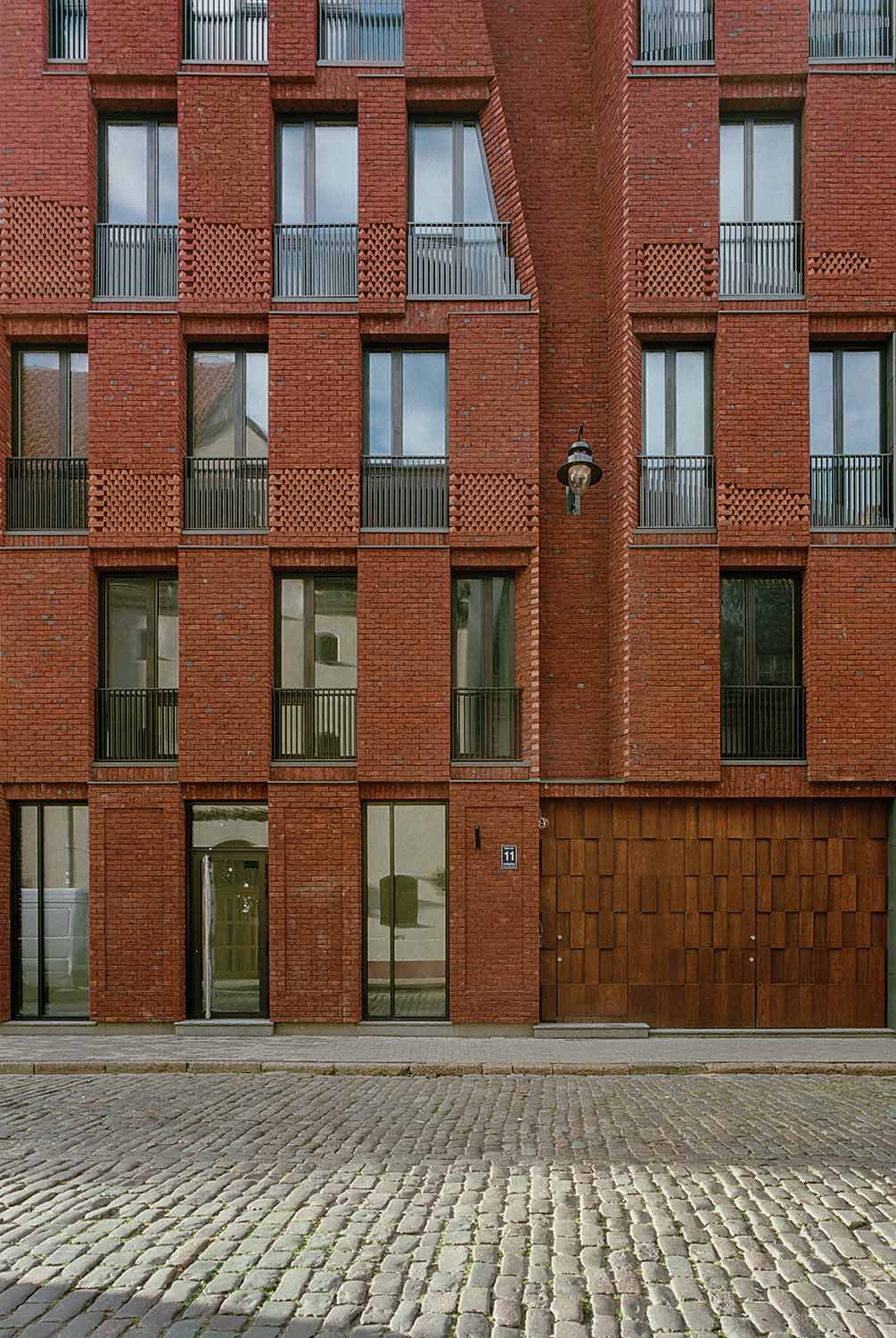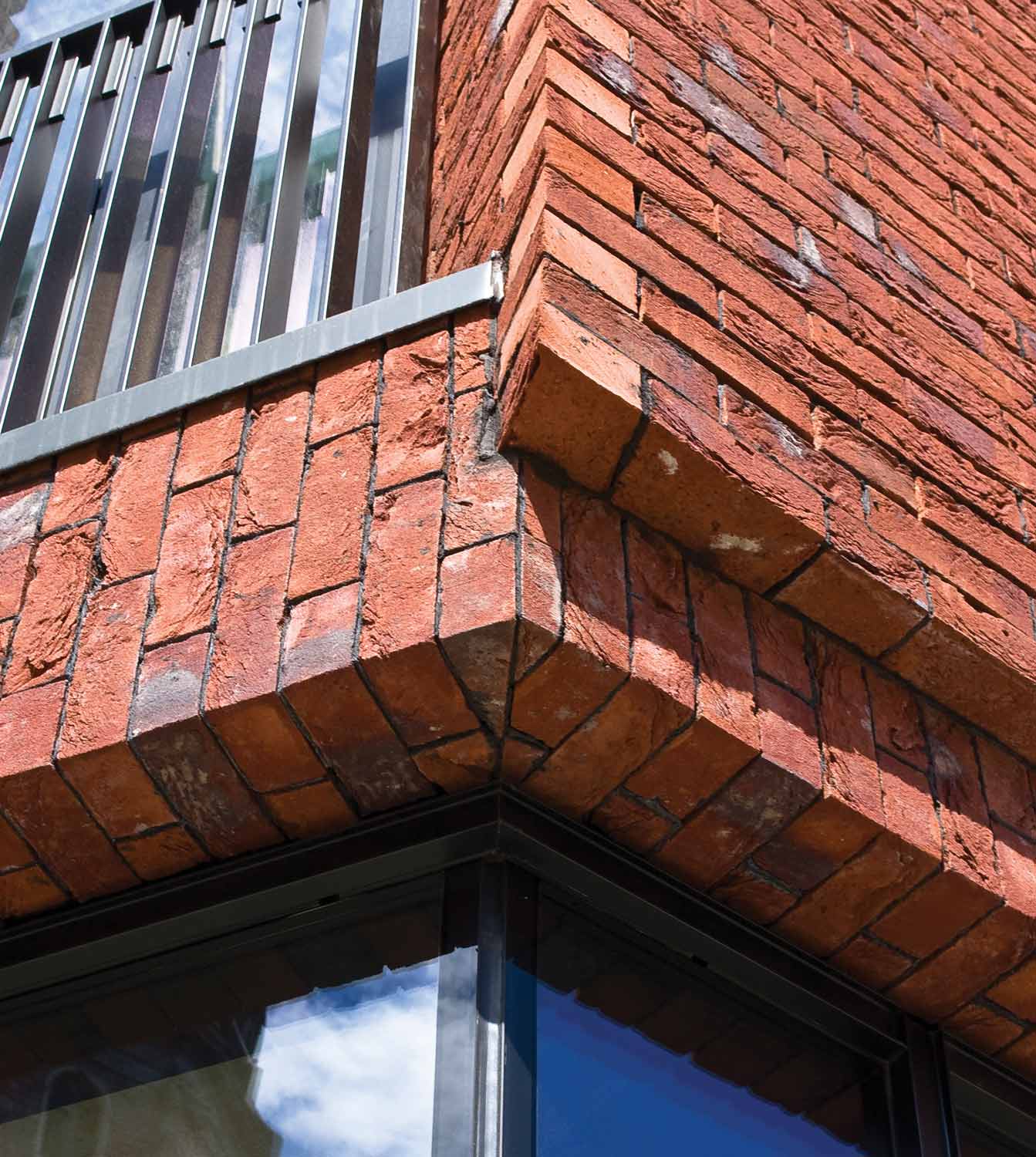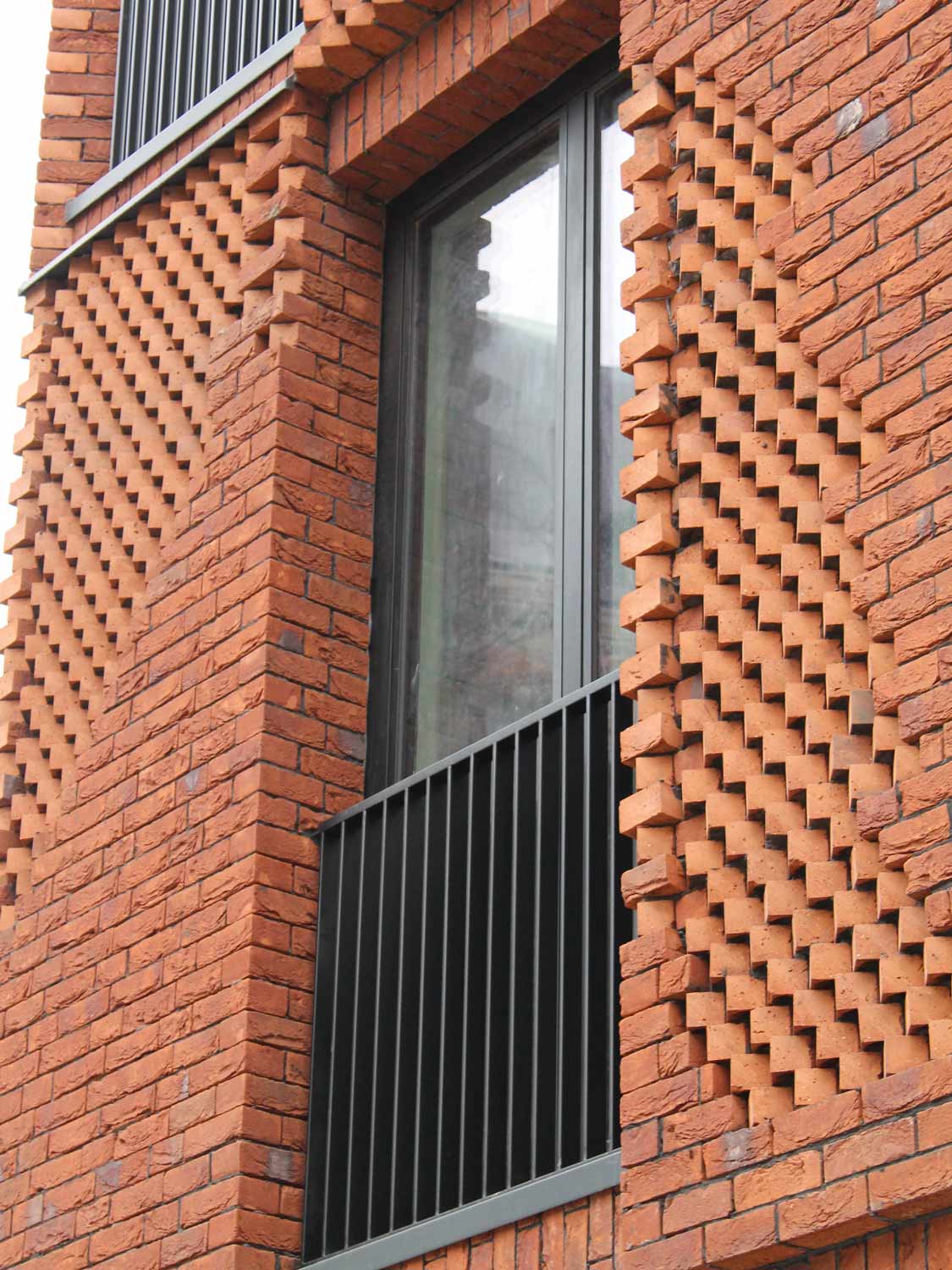Skarnu 11 / Jaunromāns un Ābele
Skarnu 11 / Jaunromāns un Ābele
Famous neighbours
The brick building with six apartments and commercial space on the ground floor was designed and built over a decade. Situated right in the middle of the city, it exhibits five playfully yet strongly organized facades towards some of the most famous pieces of local heritage, including the 13th-century St. John's Church, the oldest church in Riga, and St. Peter's Church, for many years the Museum of Decorative Arts and Design.
Triple protection
Most buildings situated in Riga’s Old Town are protected three-fold – by the city, the state, and UNESCO (the Old Town and its surrounding area is a World Heritage Site). This new building is even more special: many argue this is the oldest spot in town, and that the entire history of local architecture started right here.
Sculptural ambitions
In 2006, an international architecture competition was announced to find the best possible design for a new residential building on the 175 m2 plot. The aim of the competition was to create a building with exclusive sculptural qualities that would blend in, but also complement the complex urban situation.
First prize went to a then newly established studio, Jaunromāns un Ābele, leaving teams from Finland (JKKM) and Italy (Claudio Bonicco) behind. As Andris Kreislers, representative of Decarta Property, recollects, ‘The biggest challenge at that time was the responsibility to get the architecture right for this particular place and time. That is why we organized an international competition. We had to get it right.’ A couple years after the competition and first stages of design, the economic meltdown set in and everything stopped for a while. Luckily, neither the plot was sold nor the idea cancelled, and the project went on when times turned for the better.
Layers of history
The new building is fixed to the firewall of a house sitting on an adjacent plot, and built on the basement of a previous building destroyed during WWII, when the area was heavily bombed.
The building uncovers many layers of history – next to the firewall the eclectic style developed in the early 20th century can be seen. The volume then slightly drops down to channel the two- and three-level houses typical of the Middle Ages. There is also a certain grandeur present when looking from afar: the building has seven levels, which is tall for Riga, and an expansiveness due to the monumentality of the brick facade, once so common but now a rather exclusive choice for commercial residential architecture.
Tried and tested
Although the brick now seems an obvious choice for facade material, it was not the only option considered. Many facade systems, including wood panelling, were tried and tested, and many meetings were held to determine a suitable look – contemporary, yet elegant with a strong note to longevity.
Asked about the methodology of design, both architects agree it was very hands-on, with dozens of models, including one of the whole square, being built during various stages of design. ‘Model making is very important to us,’ explains Mārtiņš Jaunromāns. ‘Only by working and reworking all ideas and options that could possibly be suitable for the place, can we be sure there are no compromises.’ After the structural walls were ready, the brick samples were brought to the building site and put in the window openings to see how would they look in real life, day and night. ‘The process of choosing the right building materials at some point was exhausting,’ Jaunromāns continues. ‘But we are at peace now; the choice was right, brick was our first and our last option.’
Let’s play chess!
The windows are placed in a slightly twisted pattern of a chessboard. The architects deliberately wished to play with the centuries-old window arrangement, to achieve a contemporary look that is not alien to the surrounding buildings. The rhythm is there, the pattern is strong, but the beat is more electronic than classical.
Graphic design
The in-and-out brick pattern on the facade is inspired by a sculpture depicting the famous Town Musicians of Bremen: a donkey, dog, cat, and rooster standing on top of each other. Located close to 11 Skarnu Street, the sculpture was a gift from Riga's twin city of Bremen, Germany.
The architects did not want the facade to remain plain, yet the irregular architectural patterns they tried to elaborate felt unrelated to the situation. The solution came together with the help of a graphic designer, who then copied the silhouettes of the ‘musicians’ to add both humour and context to the brick graphics.
Layout
Each level has a single function: a commercial space on the ground floor, one apartment on each of the levels 2 to 5, plus a top floor apartment with an extension and terrace on level 7. Each of the apartments offers a splendid 270-degree view, as well as wooden French windows in metal frames and small balconies.
Brick collaboration
Although the brick for the facade was chosen from a catalogue without any custom-made interventions, it was the intention of the architects that made it a little special in the context of the chosen material. ‘We spent hours establishing the right direction: the dimensions, the facture, the colour,’ Jaunromāns remembers. ‘There was an option to go light with the colour, there was an option to go black, since we did not want the colour to match the historical brick.’ Samples were ordered from the brick makers at Vandersanden Group and discussed at both the office and building site, only to discover that the best choice would also be the most predictable and traditional for this, the oldest part of Riga. An important point was that all bricks were tested for frost resistance, as the thermometer can drop down as low as -35° C in Latvian winters.
Extra info
Project team:
M. Ābele, M. Jaunromāns, I.Skadiņa, J.Šaitere,
L.Danilēviča, O.Žuks, J.Pupainis
Graphic designer:
E.Zvirgzdiņš
Competition:
2006 – 1st prize
Realization:
2013 – 2014
Client:
Dekarta Property



